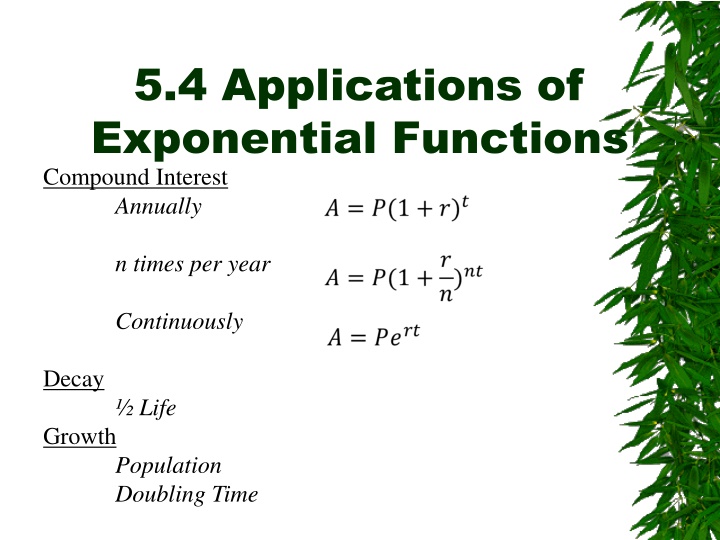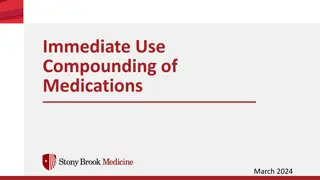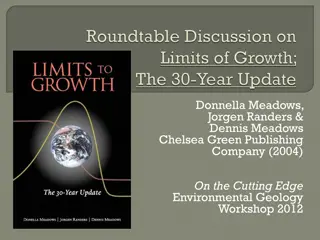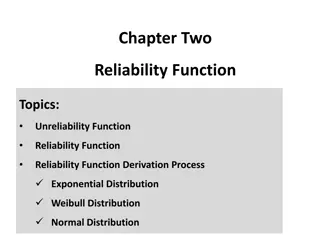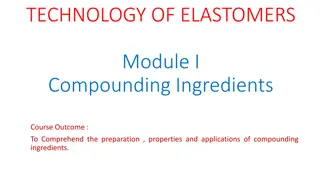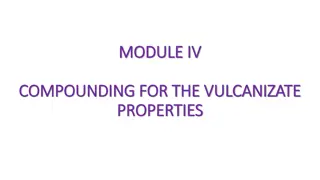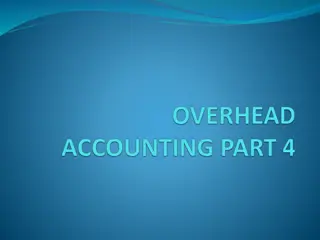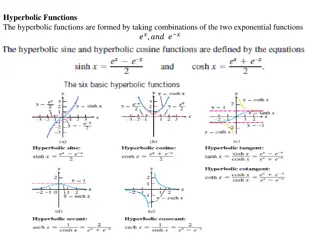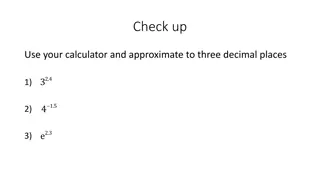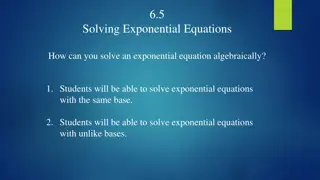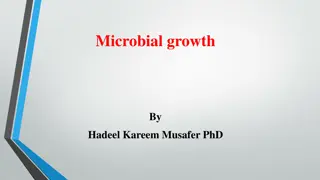Applications of Exponential Functions: Compounding, Growth Rates, and Population Dynamics
various applications of exponential functions in finance, growth rates, and population dynamics. Learn about compound interest, different compounding periods, continuous growth, doubling time, and population growth models. Dive into examples illustrating these concepts and their practical implications.
Uploaded on Feb 22, 2025 | 0 Views
Download Presentation

Please find below an Image/Link to download the presentation.
The content on the website is provided AS IS for your information and personal use only. It may not be sold, licensed, or shared on other websites without obtaining consent from the author.If you encounter any issues during the download, it is possible that the publisher has removed the file from their server.
You are allowed to download the files provided on this website for personal or commercial use, subject to the condition that they are used lawfully. All files are the property of their respective owners.
The content on the website is provided AS IS for your information and personal use only. It may not be sold, licensed, or shared on other websites without obtaining consent from the author.
E N D
Presentation Transcript
5.4 Applications of Exponential Functions Compound Interest Annually n times per year Continuously Decay Growth Life Population Doubling Time
Example 1: Different Compounding Periods Determine the amount that a $5000 investment over ten years at an annual interest rate of 4.8% is worth for each compounding period. A = 5000(1+.048)10=$7990.66 A. annually A = 5000(1+.048/4)10(4)=$8057.32 B. quarterly A = 5000(1+.048/12)10(12)=$8072.64 C. monthly A = 5000(e)10(.048)=$8080.37 D. continuously
Example 2: Solving for the Time Period If $7000 is invested at 5% annual interest, compounded monthly, when will the investment be worth $8500? 8500=7000(1+.05/12)12t t = 3.891 years This is equivalent to a 5.116% interest rate compounded annually 5 12)12= 1.051162 = 5.116% (1 +
Example 3 a) If f(x) has a continuous growth rate of .17, what is the yearly percentage growth rate? ? = ???? ?? ? = ?(1 + ?)? ?.17 = 1.18530 = 1 + .18530 ? = 18.530% b) If f(x) has a monthly percentage growth rate of 3.1%, what is its continuous growth rate? ? 12)12? (1 + .031)12 = 1.44246 = ? = ??1.44246 = .36635 = 36.635% ?? ? = ???? ?? ?? ? = ?(1 +
Example 4: Population Growth The population of Tokyo, Japan, in the year 2000 was about 26.4 million and is projected to increase at a rate of approximately 0.19% per year. Write the function that gives the population of Tokyo in year x, where x=0 corresponds to 2000. f(x)=26.4(1.0019)x
Example 5: Population Growth A newly formed lake is stocked with 900 fish. After 6 months, biologists estimate there are 1710 fish in the lake. Assuming the fish population grows exponentially, how many fish will there be after 24 months?
Example 5: Solution Using the formula f(x)=abx, we have f(x)=900bx, which leaves us to determine b. Use the other given data about the population growth to determine b. In 6 months, there were 1710 fish: f(6)=1710 1710= 900b6 b=1.91/6 f(x)=900(1.91/6)x f(24)= 900(1.91/6)24 = 11,728.89 There will be about 11,729 fish in the lake after 24 months.
Example 6: Chlorine Evaporation Each day, 15% of the chlorine in a swimming pool evaporates. After how many days will 60% of the chlorine have evaporated?
Example 6: Solution Since 15% of the chlorine evaporates each day, there is 85% remaining. This is the rate, or b value. f(x)=(1-0.15)x=0.85x We want to know when 60% has evaporated; or, when there is 40% left. *Let a = 1 f(x)=0.85x 0.40=0.85x X= 5.368
Example 7: life Suppose that the half-life of the fictional radioactive substance unobtainium is 29 years. A sample of rock is found with 80 grams of unobtainium. What is the percentage by which the amount of unobtainium in the rock decreases each year? ? = ?(1 1 .97638 = .02362 ?29 2) The % of decrease is 2.362% ? = ?(1 129)? 2) 129 .97638 ? = (.5) THIS IS THE % THAT REMAINS!
Example 8: Doubling Time Suppose a population of bacteria is growing in a petri dish in such a way that the number of bacteria doubles every 3 hours. If there are initially 1000 bacteria present, how long will it take for there to be 1 million bacteria? ?3 ? = ?(2) ?3 1,000,000 = 1000(2) ?3 1,000 = (2) ? =3 ??1,000 29.897 ???? ??2
